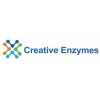Cat No.
NATE-0577
Description
Protein Kinase C (PKC) is a serine/threonine kinase that is activated intracellularly by signal transduction pathways that produce DAG from phosphatidylinositol diphosphate (PIP2) and phosphatidylcholine (PC) through the action of various activated phospholipases. Phorbol esters also stimulate PKC. At least 11 PKC isozymes have been identified that differ in primary structure, tissue distribution, subcellular localization, response to extracellular signals, and substrate specificity. The isozymes can be grouped into three subfamilies. Members of the first family require Ca2+ and phospholipid and include PKCα, βI, βII, and γ. Members of the second family are phospholipid-dependent but Ca2+-independent, and include PKCδ, ε, η, and θ. Members of the third family are not activated by either DAG or phorbol esters and include PKCξ, μ, and ι.
Abbr
PKCL, Recombinant (Human)
Alias
PKCL; PKCι
Source
E. coli
Species
Human
Form
buffered aqueous glycerol solution
Molecular Mass
apparent mol wt ~98 kDa
Purification
> 85% (SDS-PAGE)
Stability
?70°C
Applications
Kinase activity is measured as the molar amount of phosphate incorporated into the CREBtide substrate peptide per minute per mg protein at 30°C using a final concentration of 50 μM [32P] ATP.
Gene Name
PRKCI protein kinase C, iota [Homo sapiens]
Synonyms
PKCL; Protein Kinase C Lambda/Iota; PKCι
GeneID
5584
mRNA Refseq
NM_002740
Protein Refseq
NP_002731
MIM
600539
UniProt ID
P41743
Chromosome Location
3q26.3
Pathway
Cell junction organization, organism-specific biosystem; Cell-Cell communication, organism-specific biosystem; Cell-cell junction organization, organism-specific biosystem; EGFR1 Signaling Pathway, organism-specific biosystem; Endocytosis, organism-specific biosystem; Endocytosis, conserved biosystem; G Protein Signaling Pathways, organism-specific biosystem
Function
ATP binding; metal ion binding; nucleotide binding; phospholipid binding; protein binding; protein kinase C activity; protein kinase activity; protein serine/threonine kinase activity; protein serine/threonine kinase activity; zinc ion binding





